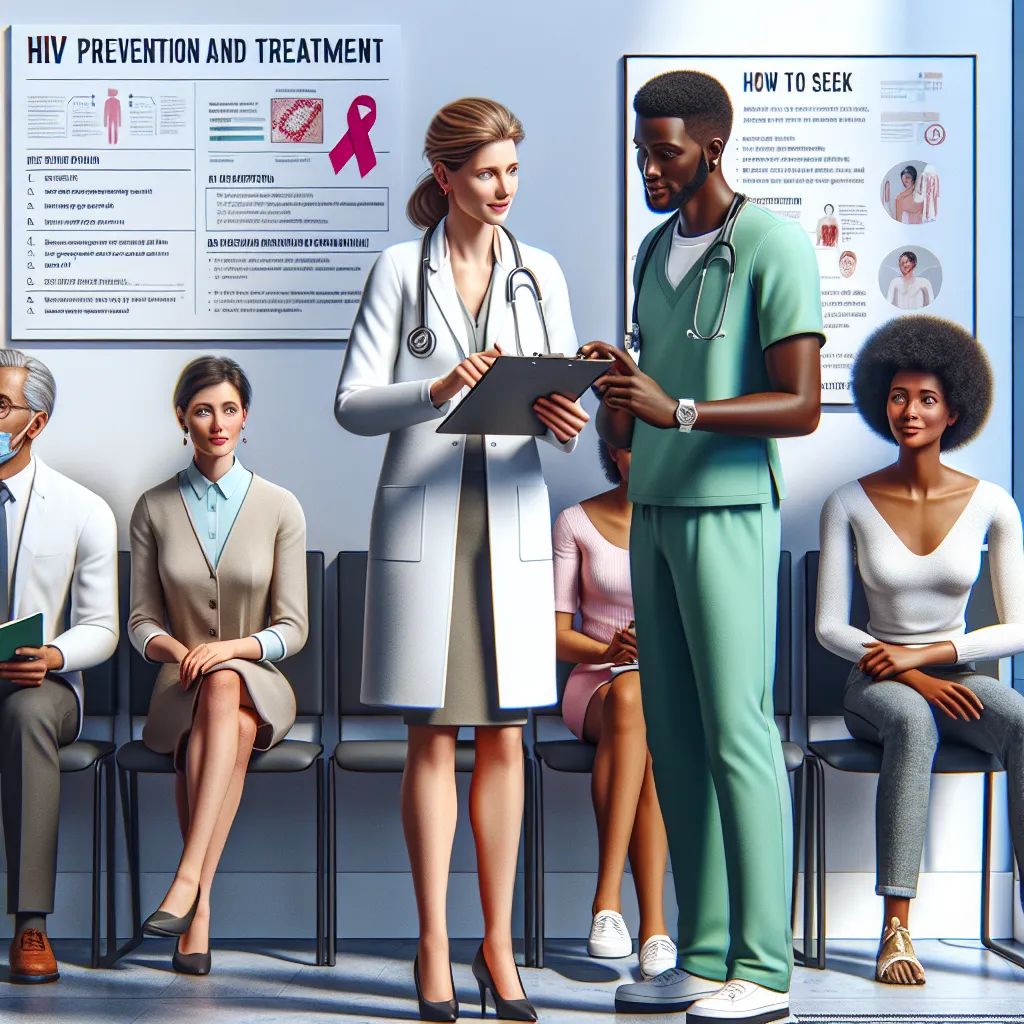HIV Symptoms in Men: Recognizing the Signs and Seeking Treatment
HIV Symptoms in Men: Recognizing the Signs and Seeking Treatment
Human Immunodeficiency Virus (HIV) is a global health concern that affects millions of people worldwide. While HIV can affect both men and women, it is important to understand the specific symptoms that men may experience. Recognizing these symptoms is crucial for early diagnosis, treatment, and prevention of further transmission.
Understanding HIV
HIV is a virus that attacks the body’s immune system, specifically targeting CD4 cells, also known as T-helper cells. These cells play a crucial role in fighting off infections and diseases. Over time, HIV can destroy a significant number of CD4 cells, weakening the immune system and making individuals more susceptible to infections and diseases.
The virus is primarily transmitted through unprotected sexual intercourse, sharing needles, or from an HIV-positive mother to her child during childbirth or breastfeeding. It can also be transmitted through blood transfusions, though this is now extremely rare due to stringent screening processes.
Early Symptoms of HIV
After initial infection, individuals may experience flu-like symptoms within a few weeks. This period is referred to as acute HIV infection or primary HIV infection. Symptoms during this stage can vary but commonly include:
- Fever
- Sore throat
- Rash on the body
- Headache
- Muscle and joint pain
- Swollen lymph nodes
These symptoms can last for a few days to several weeks and are often mistaken for common illnesses. As a result, many people may not associate these symptoms with HIV infection.
Asymptomatic Stage
After the initial symptoms subside, HIV enters a dormant stage, known as the asymptomatic stage. During this stage, individuals may not experience any noticeable symptoms for an extended period, which can range from a few months to several years.
Although no visible symptoms are present, the virus remains active and continues to attack the immune system. It is important to note that even without symptoms, HIV can still be transmitted to others.
Advanced HIV and AIDS
If left untreated, HIV can progress to the advanced stage, known as Acquired Immunodeficiency Syndrome (AIDS). At this stage, the immune system is significantly weakened, and individuals become highly susceptible to opportunistic infections and certain types of cancers.
Advanced HIV symptoms can include:
- Persistent fever
- Extreme fatigue
- Rapid weight loss
- Night sweats
- Persistent diarrhea
- Swollen lymph nodes
- White spots in the mouth or throat (oral thrush)
- Blurred vision
- Shortness of breath
It is important to note that the symptoms mentioned above are not exclusive to HIV and can be associated with other illnesses as well. However, if you suspect you may have been exposed to HIV, it is crucial to seek medical attention for appropriate testing and diagnosis.
HIV Testing and Diagnosis
Getting tested for HIV is the only way to confirm the presence of the virus. Various testing methods are available, including blood tests, oral swabs, and rapid tests that provide results in minutes. These tests detect the presence of HIV antibodies or the virus itself in the blood or saliva.
It is recommended to get tested if you have engaged in unprotected sex, shared needles, or have had any other potential exposure to the virus. Additionally, routine testing is encouraged for sexually active individuals, especially those with multiple partners.
If your test results are positive, further tests will be conducted to determine the stage of the infection and the appropriate treatment options.
Treatment and Management
While there is no cure for HIV, significant advancements have been made in medical treatments that can effectively manage the virus and improve the quality of life for individuals living with the infection.
Antiretroviral therapy (ART) is the standard treatment for HIV. This therapy involves a combination of antiretroviral drugs that help suppress the virus, slow down its progression, and reduce the risk of transmission. Adhering to the prescribed treatment regimen is crucial for its effectiveness.

Additionally, healthcare providers may recommend preventive measures such as vaccinations, regular screenings for opportunistic infections, and counseling on safe sexual practices and harm reduction.
Preventing HIV Transmission
Prevention plays a vital role in reducing the spread of HIV. Some key preventive measures include:
- Using condoms consistently and correctly during sexual intercourse
- Avoiding sharing needles or other drug paraphernalia
- Getting tested regularly for HIV and other sexually transmitted infections
- Using pre-exposure prophylaxis (PrEP) for individuals at high risk of contracting HIV
- Ensuring that HIV-positive pregnant women receive appropriate treatment to prevent mother-to-child transmission
Education and awareness are crucial in fighting the HIV epidemic. Understanding the symptoms, seeking early testing and diagnosis, and adopting preventive measures can make a significant difference in managing and preventing the transmission of HIV.
Conclusion
Recognizing the symptoms of HIV in men is essential for early diagnosis and timely treatment. While some symptoms may overlap with common illnesses, it is important to seek medical attention if you suspect exposure to the virus. HIV testing is widely available, and early detection can lead to improved health outcomes and reduced transmission rates. By adopting preventive measures and raising awareness, we can work towards a future free from the burden of HIV.
